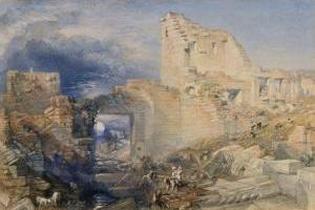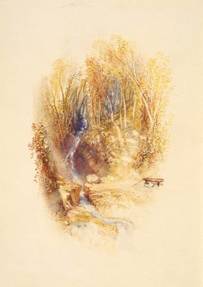January: annual display of Turner Watercolours in Ireland and Scotland
January is the month when the Turner’s watercolours which were bequeathed by Henry Vaughan, the distinguished collector, are put on display at the Scottish National Gallery in Edinburgh and the National Gallery of Ireland, Dublin. Henry Vaughan stipulated in his bequest that these delicate watercolours should be ‘exhibited to the public all at one time, free of charge, during the month of January’ and his wishes have been faithfully adhered to for over 100 years. The works are in pristine condition and the limited exposure has meant they retain their luminous colours.
The exhibitions in both galleries run for the month of January and are free.
The four paintings below were in the Windus Collection.
The four paintings below were in the Windus Collection.
Henry Vaughan (1809-1899) was one of the most distinguished and generous of Victorian collectors. He was just twenty-one when he inherited a fortune from his father, who had been a wealthy hat maker. These bequests cover all periods of JMW Turner’s career from his early topographical wash drawings to his expressive images from his later European tours. Henry Vaughan also made bequests to a number of other galleries including the British Museum, Tate and the V&A.
Bicknell and Munro, B.G. Windus, Henry Vaughan and the young Ruskin were among the small and exclusive group who collected the relatively few watercolours that Turner chose to finish in the last years of his life. It was partly by studying his work in Windus’s collection at Tottenham Green that Ruskin formed his view of Turner – recognising his unique technical powers but also reasserting earlier readings of the natural and moral truths expressed by his art.
These collections also fostered the posthumous view, already expressed by the German critic and connoisseur Gustav Waagen in 1854, that these qualities had latterly been seen to ‘far greater advantage’ in Turner’s watercolours than in his oils.
David Blayney Brown, Tate
Bicknell and Munro, B.G. Windus, Henry Vaughan and the young Ruskin were among the small and exclusive group who collected the relatively few watercolours that Turner chose to finish in the last years of his life. It was partly by studying his work in Windus’s collection at Tottenham Green that Ruskin formed his view of Turner – recognising his unique technical powers but also reasserting earlier readings of the natural and moral truths expressed by his art.
These collections also fostered the posthumous view, already expressed by the German critic and connoisseur Gustav Waagen in 1854, that these qualities had latterly been seen to ‘far greater advantage’ in Turner’s watercolours than in his oils.
David Blayney Brown, Tate




